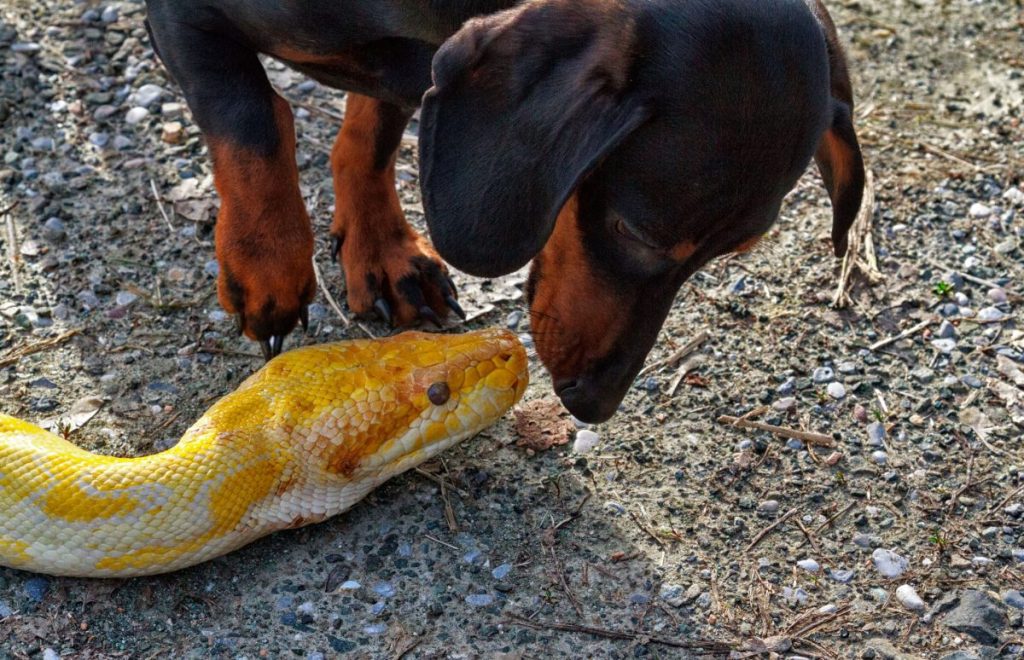One of the most common precipitators of snakebites are dogs. Canines’ sharp noses and boundless curiosity can easily lead them into situations that their humans would rather they avoid. Luckily, snakes are much more afraid of people than people are of them. So even if your dog does find a snake, that snake is likely to slither away rather than escalate the situation. If you are walking your dog in the wilderness, though, there are a few simple steps you can take to avoid snakes. If you and your dog do end up in a sticky situation, these tips will help you both make it out whole and unharmed.
1. Research snakes in your area
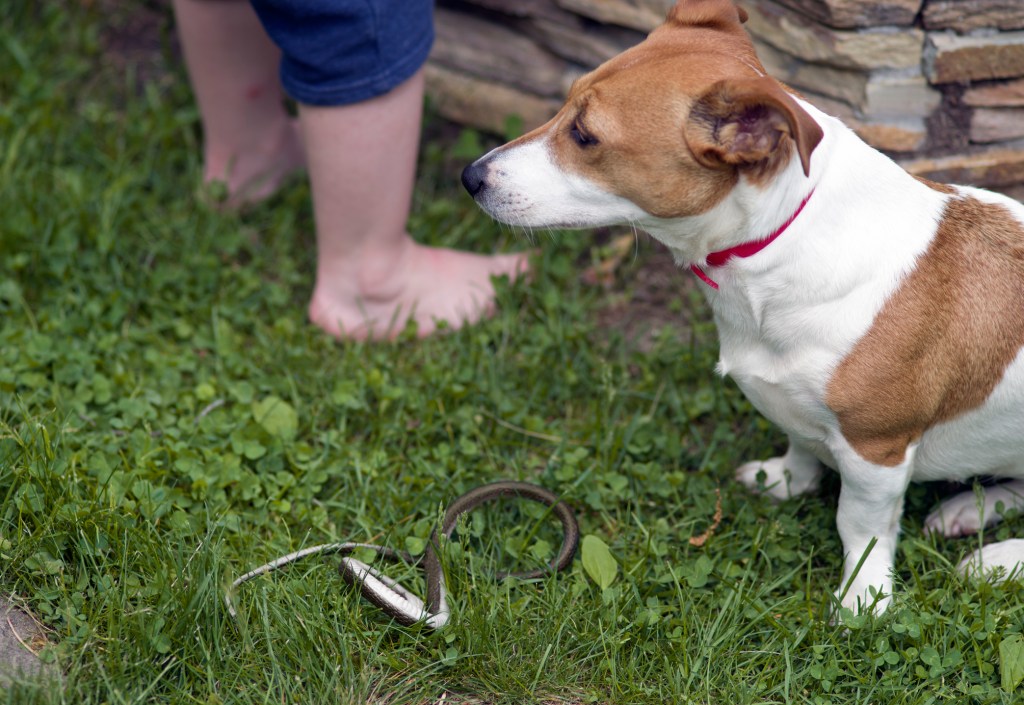
Knowing what kind of snakes you might encounter and where you are likely to find them in the area you are walking in is crucial to both preventing and reacting to a snakebite. Coral snakes, for instance, tend to live in different environments than water moccasins or rattlesnakes.
If the worst does come to pass, knowing what kind of snake bit your dog will also help your vet treat your dog as quickly and effectively as possible.
2. Be prepared
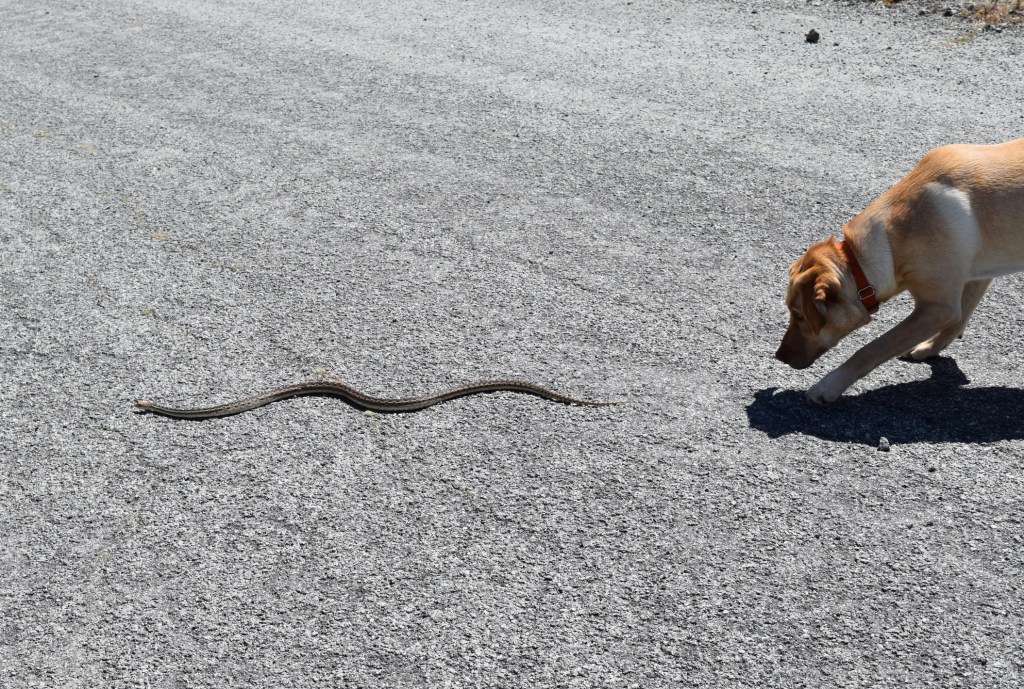
In addition to knowing what kind of snakes you might encounter, having an action plan, tools, and preventive measures in place will help prevent serious bites and manage them if they do occur.
For your own protection, wear stiff boots that cover your ankles — the most likely place for snakes to bite. Also, have a basic first-aid kit and a way to contact other people if things go south.
Make sure you bring your phone on your walk. If you are going off the grid, inform a friend or family member of your whereabouts and when you will return.
For your dog’s safety, locate the nearest emergency vet clinic before you head out. Save the phone number in your contacts so you can quickly call about any bites that occur.
If you are in the American Southwest, consider vaccinating your dog against western diamondback rattlesnake bites, which will reduce the severity of those bites if they do occur. This vaccination may also be beneficial for other venomous bites, especially from similar snakes, like the eastern diamondback.
3. Stay as far away as you can
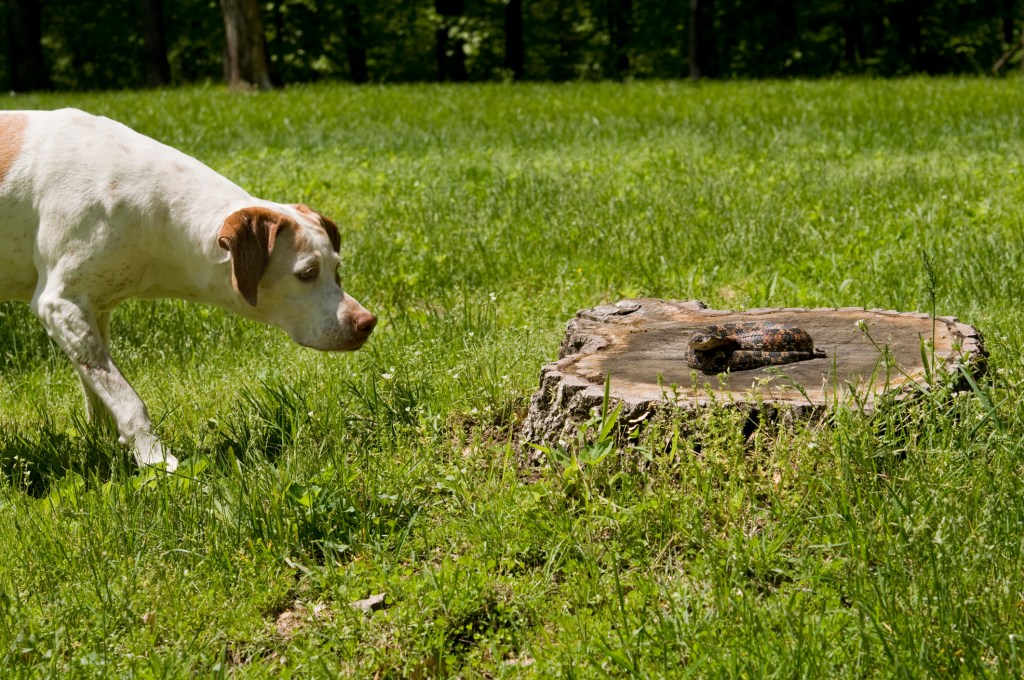
If you are fortunate enough to see the snake before your dog gets too close, the best thing you can do is stay back. Snakes can quickly strike at a distance of up to half their body length, so keep more distance than you think you need to.
As soon as you see a snake, shorten your dog’s leash. Do not give them more leeway to roam until you are well past the snake.
If your dog sees the snake before you do, or you surprise one and end up closer than you want to be, move slowly away.
4. Carry your dog away from the snake
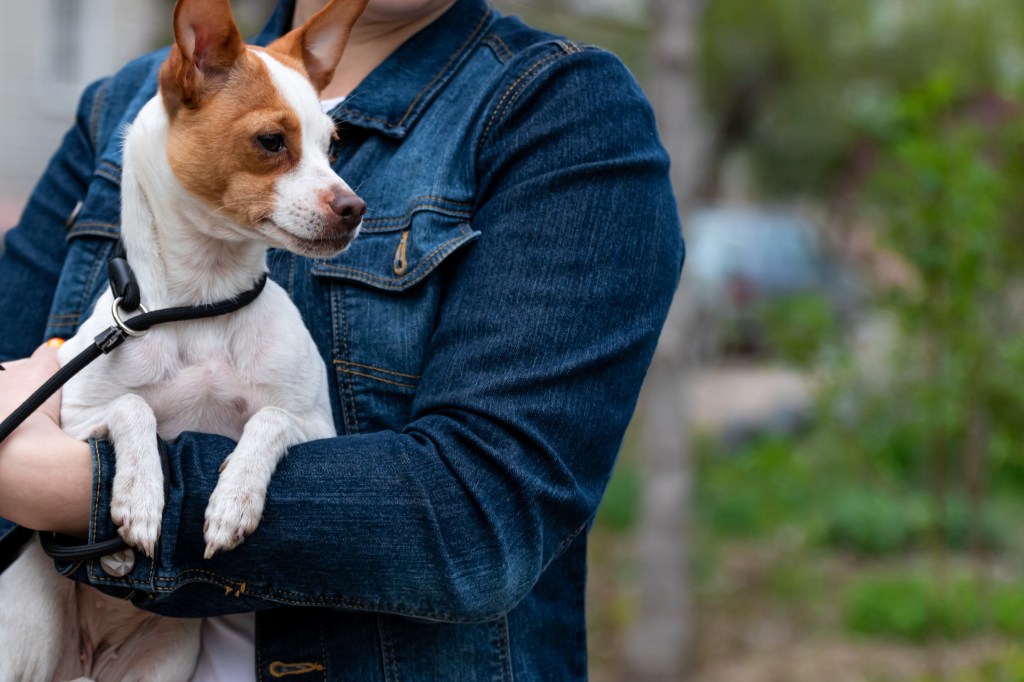
Getting your dog away from the snake should be your number-one priority if you notice they have gotten too close. If possible, try to carry your dog out of the situation, rather than having them walk.
Carrying your dog will help them stay calm, as they will be close to their favorite human and away from the agitating factor, the snake. Carrying your dog will also keep them under control and unable to run back to the snake and antagonize it.
Be careful, though, not to make any sudden movements near the snake, which might upset it or activate its defensive instincts.
If you are within striking distance of the snake — usually about half of its body length — back away slowly before picking up your dog. Bending down will just expose your unprotected hands and arms to a bite.
If a snake does bite your dog, carry them back to your car if you can. Helping your dog stay calm and exert themselves as little as possible will keep their heart rate low. In turn, the spread of the venom throughout their body will slow. This will also minimize the damage venom can cause to your dog.
5. Be vigilant in higher-risk environments
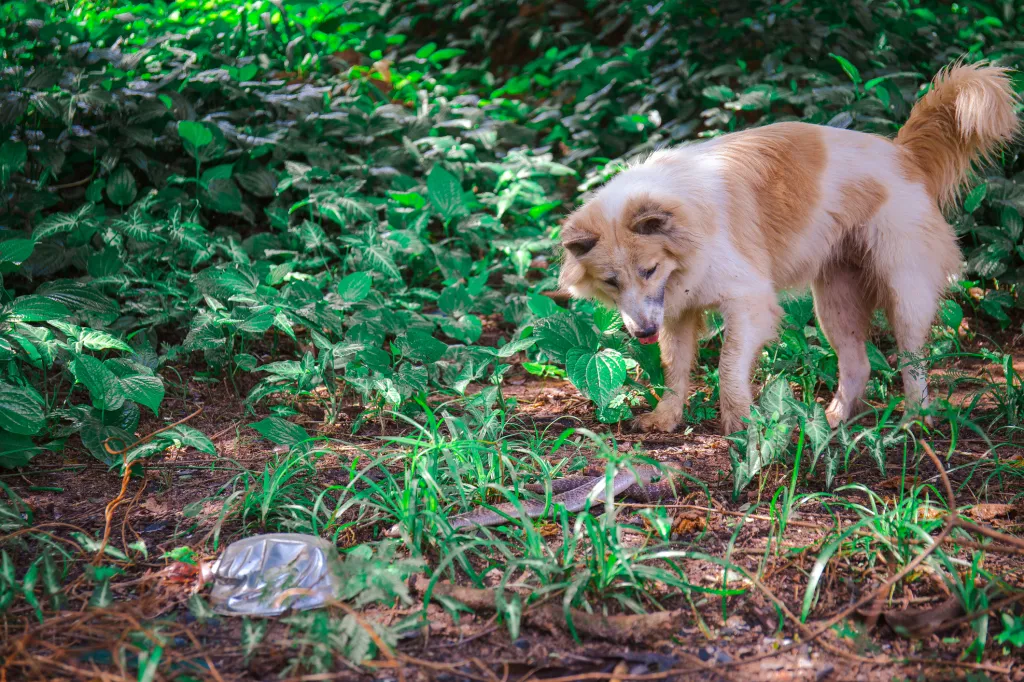
Some environments are more likely to harbor snakes than others. Knowing what those are and where to watch for snakes is crucial for avoiding unwanted or unexpected encounters.
Tall grass and dense bushes are both prime spots for snakes to hide. Fallen trees, overgrown riverbanks or lakeshores, and crevices in rocks are also all likely places to encounter snakes. Risk is also higher at night, when your visibility is lower, especially since some venomous snakes are nocturnal.
Snake activity is also higher about a week after heavy rains, so added caution during those times will help keep your dog safe from unexpected encounters.
The idea of a snakebite or snake encounter, especially with your dog in tow, is nerve-racking, but it should not put you off from exploring the great outdoors with your dog.
With a few simple safety steps, you and your dog should be ready to go out and experience all the big, wide world has to offer!
Now that you know how to avoid snakes while walking your pup, read up on other wild animals that will attack your dog.
